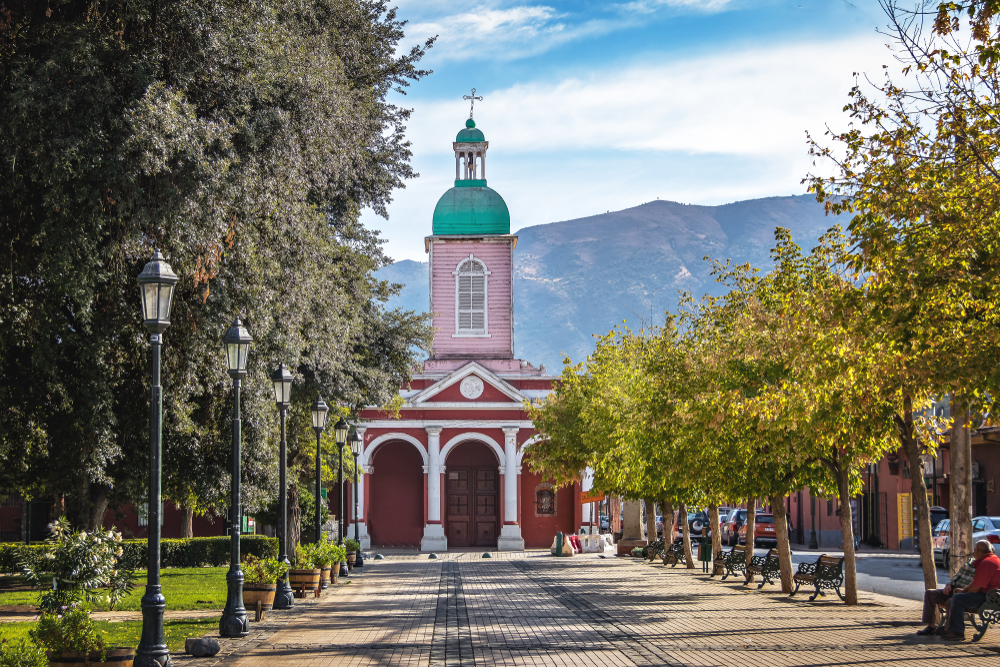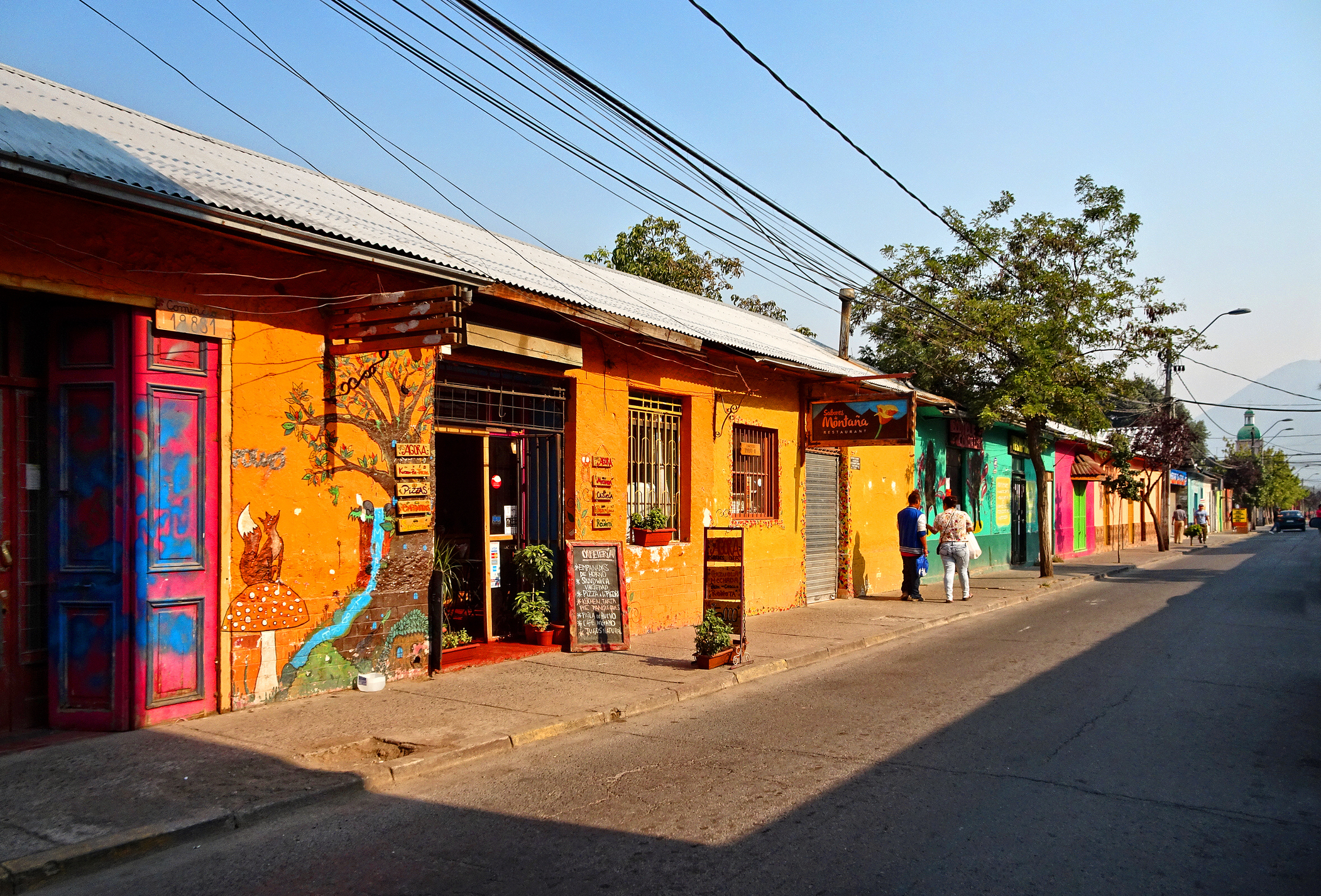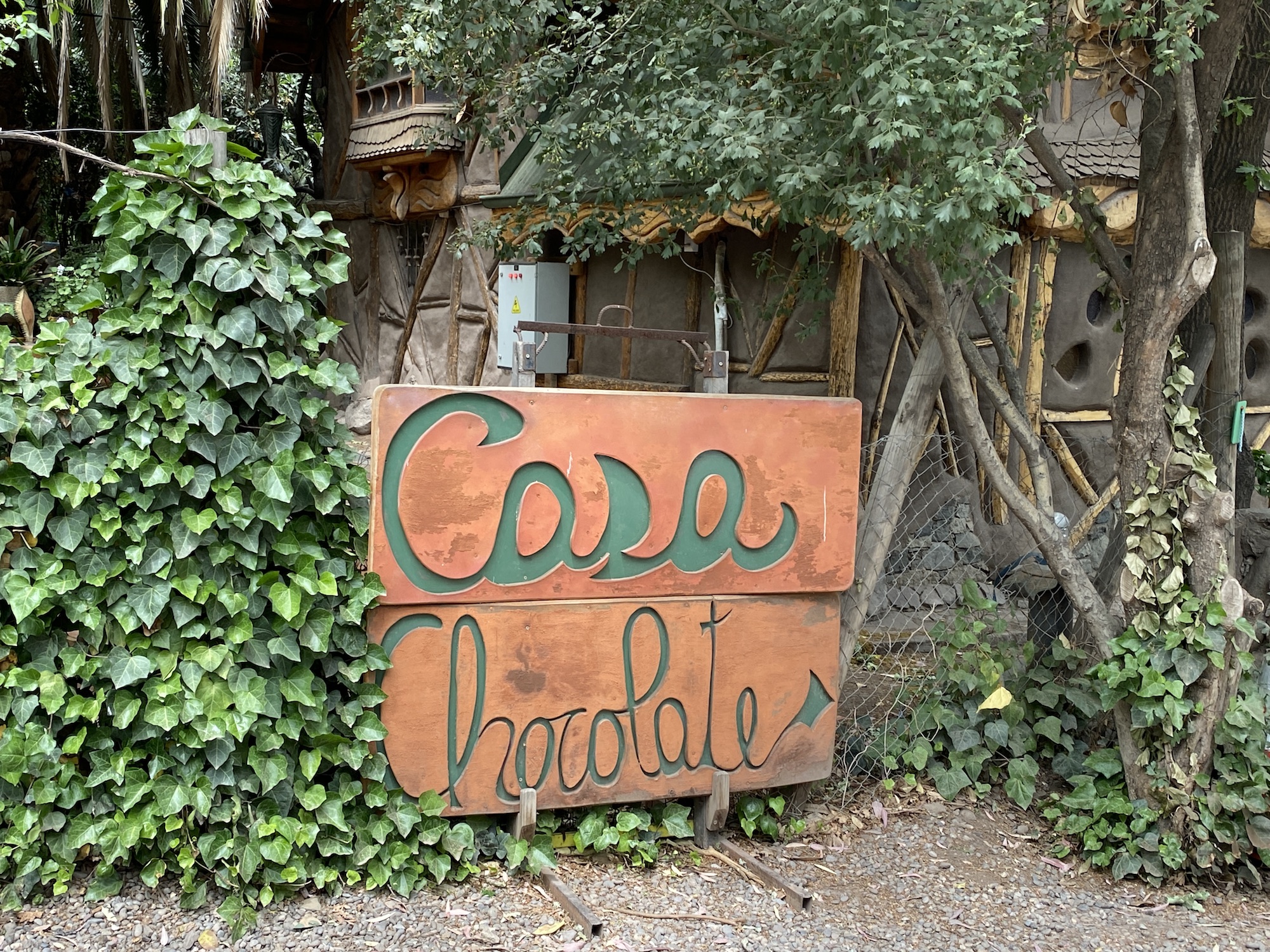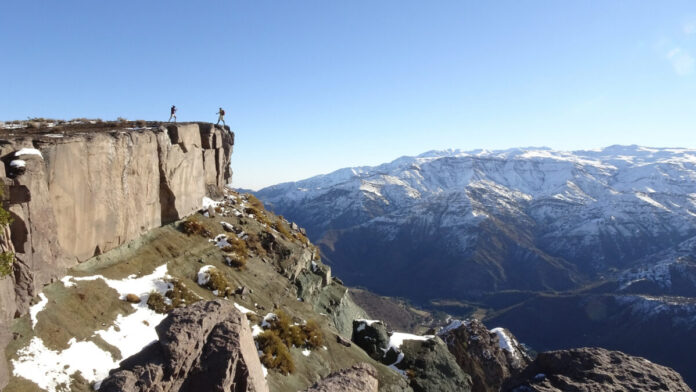Santiago seemed to last forever. The peaks rose on the horizon, those great continent-dividing Andes Mountains, dusted with white across their uppermost reaches. Close enough to touch, it seemed, but still so very far away. For what seemed like a long time, we wound through the traffic-choked thoroughfares of the Chilean capital, gliding from freeways to city streets, taking locals-only shortcuts and brief dashes across small neighborhoods. “We’re going to where the Maipo begins!,” declared Andres, a finger held in the air, the other hand firmly on the wheel.
And then, in short order, that great, steaming city fell away. We climbed in altitude, curling through a deep river valley, the surface of that flow flashing down below. As the sun tried to break through the clouds, Andres looked a little entranced as he recalled his history here. As a kid, he said, he and his father—an architect—would ride high into these hills to survey the land and perform ecological studies. “We went way up there, where there’s snow,” he said, pointing again, and shaking his head. “It was beautiful, so beautiful.”
Containing almost 40 percent of the entire country’s population, Santiago sprawls. But spreading just to the southwest, the Maipo Canyon offers fresh air and stunning vistas, just outside of town. It’s a perfect day trip to escape the urban maze, and, on my visit, it was one full of surprises.
Meeting Andres—my driver and informal guide—was fairly fortuitous. Dropping a pin for an Uber ride home from a city mall to my Santiago hotel, he pulled up in a nondescript sedan. On the short drive, we had an excellent chat, Andres providing both insights and laughs. I asked him whether he ever did day tours. Not usually, he said, but he named a reasonable price.
Two days later, we were tracing the curves of the Maipo River, stopping to snap photos along the way. The two-lane road wound through forest and past small restaurants, holiday cabins, and shops selling locally made queso de cabra—goat cheese. Riding with Andres, I learned his knowledge is extensive. He made casual references to art history, and classic films. He gave me a tight synopsis of recent Chilean history and how it relates to today’s political contour lines. And he explained that this area is home to hot springs as well as all sorts of wildlife, including pumas and wild guanacos—a camelid related to the llama.
“There is a whole separate mountain culture,” he told me. In the past, bandits roamed these parts, bringing contraband through a labyrinth of pathways over the Andes from Argentina. “Now, those trails are mostly used for trekking.”


Nomad families, too, to this day pasture their horses and cattle up high on the ridges in the summer and down in the safety of the valley during the winter. As they have for hundreds, even thousands of years.
We make various stops along the way, including a small hike into a train tunnel along an abandoned rail bed that once transported coal out of the mountains. In San Jose de Maipo, a small town above 3,000 feet, we strolled around the central Plaza de Armas. A base for adventures like whitewater rafting and fly fishing, the air is clear and cool. The whole place has an alpine feel, with stone buildings and A-fame houses.
Chocolate and Houses
And just a few more miles up the road, we pulled off at a curious-looking chocolate shop. We had passed a few similar-looking places, whimsical structures that appeared as if a fairytale giant had picked them up and plunked them down, right here.
After browsing the chocolate (made here, from base materials that come from Ecuador), we asked about the curious architectural style and its ubiquity throughout the valley. The friendly young woman behind the counter told us that we were in luck—the builder was actually here today.
A few minutes later, Sergio Andrade Huber and his son Lorenzo approached, offering welcome with warm handshakes. We toured through their busy workshop, which has canoes and kayaks hanging from the ceiling. “We’re a whitewater family,” Lorenzo explained.





We sat down for an afternoon coffee at a table he had hand-crafted from coastal flagstone, near a wood-stove he had built partially from the wheels off the first subway in Santiago. They explained that Sergio began by building his own home, and has since constructed 76 houses in this area. He takes care of everything, from woodworking to mosaics. Colors are bright. Tile work is intricate, filled with happy symbols. He also integrates as many recycled materials as possible. When building a house for Lorenzo, he integrated 40,000 used tires in the foundation.
Self-taught, Sergio builds by feel and inspiration. I asked him what he hopes visitors will take away after visiting this place and his other creations. “Just a second of happiness,” he says, a smile beneath his full moustache. “A moment where you’re off your cell phone, enjoying the reality of the moment.”
Later that afternoon, we left the Maipo Canyon. The city awaited, its glassy towers rising on the horizon. But I still felt it. Just a day in the mountains, but so much magic.
If You Go
Fly: Santiago’s Arturo Merino Benitez International Airport (SCL) is Chile’s largest hub, with a number of major carriers providing nonstop flights from around the world, including a number of North American cities (including Miami, Houston, and Toronto).
Stay: Radisson Blu Plaza El Bosque is situated in one of Santiago’s best districts, within walking distance of parks, shops, and good restaurants. There’s an indoor pool on the top floor, and a bustling bar on the ground floor. It’s worth paying a little more for a corner suite, which have sweeping views of the mountains, as well as a separate living area and deep-soaker tubs.
Get Around: Santiago has a serviceable public transit system, although ride-sharing services provide convenience at a very reasonable price. If you’re looking to tour out of town—including the Maipo Canyon—a car or driver/guide is essential.
Take Note: Before you visit, you may want to brush up a little on your Spanish—you won’t find too many English speakers in the city or the canyon, and even a few fundamental words can help you navigate more easily.
Credit: Source link
































